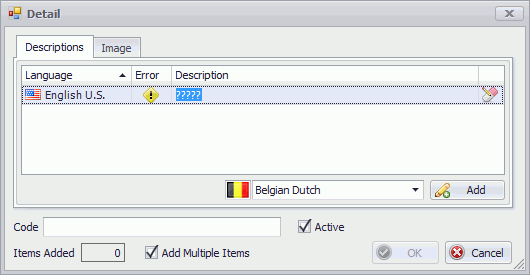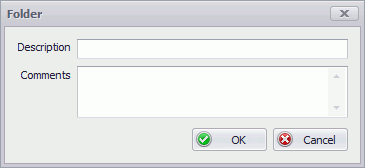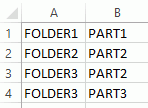What are Details?
The use of Details in Inspect is optional. Details are used in two situations:
Provide more information regarding a quality concern on a part.
Improve the location description of the concern on the part, when inspecting via part (non-image-based) buttons (as opposed to images).
For example, if an Inspect user enters the concern "dirt" on the part "door," a further modifier may be that the dirt on the door occurred in the "basecoat" or "clear-coat" of the paint.
Details are mostly used for text button input, where there is no picture of the problem component displayed. In this case, an inspector would touch a part button, then a concern, then a location and then a detail, if necessary.
Using the process flow above for example, an inspector may enter the following:
The part fender is selected.
The concern paint sag is selected.
The location left side is selected.
The detail upper is selected.
In the example above, the detail helps to specify a more precise location of the defect on the left side fender.
Creating Details
Select the Attribute tab.
Click Details.
A list of the existing details is displayed.
Click the add icon (![]() ) below the right-hand pane.
) below the right-hand pane.
The following popup appears:

Enter a description and code for the detail.
If required, add an image in the Image tab.
For a description of how to add an image see here.
Click OK.
The detail is added to the list.
The detail can now be associated to part/concern combinations. See here.
Creating Detail Folders
Detail Folders are used to make a large list of details more manageable since folders reduce the amount of scrolling you need to do.
Select the Attribute tab.
Click Details.
A list of the existing detail folders is displayed in the left-hand pane.
Click the add icon (![]() ) below the left-hand pane.
) below the left-hand pane.
The following popup appears:

Enter a description.
Enter comments if required.
Click OK.
The folder is added to the list.
Drag and drop details from the right-hand pane onto the folders in the left-hand pane to associate them.
Importing Details and Folders
Details and detail folders can be specified in an Excel spreadsheet and then imported directly to the Inspect database.
There are three different import options. Each one requires a separate spreadsheet and different information as shown below:
|
Data being imported |
Information required in first two columns |
|
Details |
Detail description, Detail code |
|
Detail Folders |
Detail folder description, Detail folder code |
|
Detail Folders / Details |
Detail folder code, Detail code |
Create the spreadsheet
Create a new spreadsheet.
Fill in the required information as listed in the table above.
There is no header row.
If you are importing detail folders and details then you can include as many combinations as you like, as shown below.

Save the file with a descriptive name.
Import the spreadsheet
Select the Attribute tab.
Click Details.
A list of the existing detail folders and details is displayed.
Import as follows:
Details - Click the Import button ( ) below the right-hand pane.
) below the right-hand pane.
Detail Folders - Click the Import button ( ) below the left-hand pane, select Folders and click OK.
) below the left-hand pane, select Folders and click OK.
Detail Folders / Details - Click the Import button ( ) below the left-hand pane, select Folders/Items and click OK.
) below the left-hand pane, select Folders/Items and click OK.
The Import Wizard window opens.
Click Next.
Either enter a file path or click the folder icon to locate and open the spreadsheet.
The spreadsheet information is checked to see if it is valid. Invalid data will be highlighted in red.
If required, select the Errors tab to see which data is incorrect.
Errors must be fixed in the original spreadsheet. You can then click the Refresh button ( ) in the wizard to re-import the spreadsheet.
) in the wizard to re-import the spreadsheet.
Click Next.
If required, disable any items you don't want to import.
Click Next.
Click Finish.
The data is imported to the Inspect database.